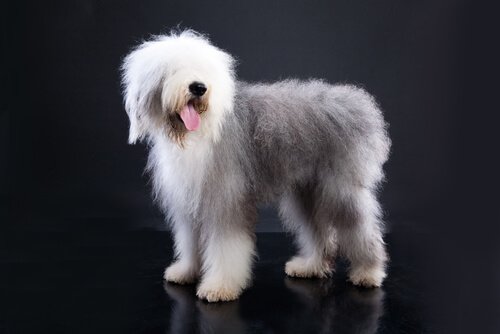Short-tailed Dogs
3 minutes

Some owners or breeders opt to dock their pets’ tails for breed “aesthetics”. However, some dogs are born with short tails or no tail at all. In this article, we’ll talk about short-tailed dogs.
What breeds of short-tailed dog exist?
Dogs that have been born with a short tail are known as “natural bobtails”. These are some of the breeds with this feature:
1. Bobtail
The Old English Sheepdog owes his original name precisely to the peculiarity of being born with a very small tail. It is a grazing and guard dog breed originating in Great Britain, and it’s large in size. It’s fur is dense and long, and white, black and grey in color. The Bobtail has a very cute face and seems to always be happy. As for his temperament, he’s a friendly, sociable and cheerful pet.
2. English Bulldog
This one is another short-tailed dog, which is curly, despite its small size. The Bulldog originated in the United Kingdom in the 17th century and is one of the country’s symbols. It’s plump, has a large head, droopy lips, and short fur of different colors (striped, red, beige, white, etc).

3. Pembroke Welsh Corgi
Its origins date back several centuries ago to Wales, where Corgis worked as shepherds. Small in size, this dog is the oldest in Great Britain and differs from the Cardigan Welsh Corgi in stature and tail type.The Pembroke Welsh Corgi is more robust, and has a short tail and a head shaped like a fox’s. Its hair can be reddish, black, beige or orange. It’s an affectionate, intelligent, hardworking dog, perfect for homes with children.
4. French Bulldog
With its bat ears and small size, this French short-tailed dog that emerged at the end of the nineteenth century belongs to the Molosser category, although its closest relative (the English Bulldog) descends from the mastiffs. This breed’s tail is small and knotted up at the end. As for its character, it is worth noting that it’s sociable, playful, cheerful, friendly and sweet. In addition, it’s patient and protective over children.
5. French Pointing Dog
Also known as the Braque Francais, it’s another breed of short-tailed dog. It’s not very common to see them outside the borders of their own country (near the border with Spain). It’s a muscular, medium-sized animal, with a short snout, brown nose and dark eyes. The French Pointing Dog’s fur is short, fine, and white with brown spots. They get along very well with children and other pets.
6. Boston Terrier
Of North American origin, this small dog with a flattened snout and erect ears is a short-tailed dog. This breed usually loses a lot of hair and suffers from dandruff if you do not bathe it once a month. It’s an excellent companion dog, and adapts to life in a flat.
Dogs with docked tails
In addition to dog breeds that are born with a very short tail, some have their tails docked right after they are born. This is for different reasons, but is mostly for aesthetic. For example:
1. Cocker Spaniel
You can find both English and American Cocker Spaniels (but mainly the former) with short tails due to this procedure. For some breeders, it’s a custom that makes a dog’s body look more elegant and balanced.

2. Bouvier des Ardennes
This breed originates from Belgium, near the German and French border. People usually dock their tails, otherwise they are quite long. Their curly fur can be almost any color. They have short ears and can weigh up to 35 kg.
3. Schipperke
This dog from Flanders is a relative of the Belgian Shepherd. The habit of docking their tails comes from a legend. According to the legend, a Schipperke dog who lived with a shoemaker in Brussels won a beauty contest. Another participant’s owner amputated the dog’s tail, leaving him with just a stub. However, the animal in question was afterwards even more successful in contests. Ever since then, people have docked their tails as soon as they’re born.
All cited sources were thoroughly reviewed by our team to ensure their quality, reliability, currency, and validity. The bibliography of this article was considered reliable and of academic or scientific accuracy.
- Federation Cynologique Internationale (2022) SCHIPPERKE (83). Recuperado el 27 de enero de 2022, disponible en: http://www.fci.be/es/nomenclature/SCHIPPERKE-83.html